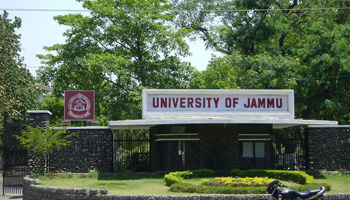About University

Cradled in the lap of mountains at the foothills of auspicious Trikuta, besides the river Tawi at an altitude of 1030 ft. is Jammu. This 'city of temples' has many places...
Taking a significant steps towards strengthening the hydrological research and monitoring capabilities, the Department of Remote Sensing & GIS, University of Jammu has successfully installed state-of-the-art instruments, including a radar sensor for continuous water level measurement, near Katal Batal Bridge to Baba Pehar Devta in the Tawi Catchment area of Nagrota.
This initiative is a result of the Memorandum of Understanding (MoU) established in March 2022 between the University of Jammu and the Indian Institute of Remote Sensing (IIRS), ISRO (DoS), Dehradun. The collaborative three-year project titled "Monitoring and Assessment of Mountain Ecosystem and Services in North-West Himalaya (Phase-II): Monitoring and Modeling of Hydrological Processes in Glaciated and Unglaciated Watersheds of North-West Himalaya," awarded to Prof. A. S Jasrotia, Principal Investigator, is aimed at advancing the understanding of hydrological dynamics .
The flood control & irrigation department has been actively contributing to this initiative by installing instruments at different locations in Chenab & Tawi to assess conventional water level records. With the recent installation by the Department of Remote Sensing & GIS, University of Jammu, sensor-based instruments are now providing real-time water level data in the Tawi catchment area.
Previously reliant on data from various locations sourced from the flood control & irrigation department, the Department of Remote Sensing & GIS now has direct access to generate comprehensive water level data using sensor-based instruments. This development marks a significant leap in the region's capacity for flood control, irrigation planning, and other state government departments reliant on accurate hydrological information.
The gathered sensor data will play a pivotal role in monitoring flood hazards and assessing the impact of climate variability on the hydrological regime of the Jammu region